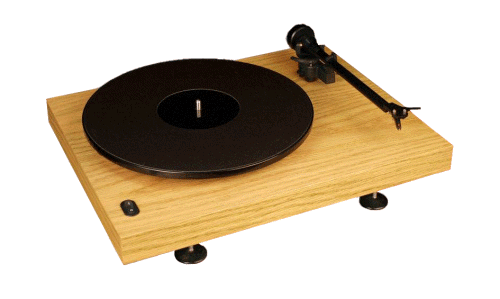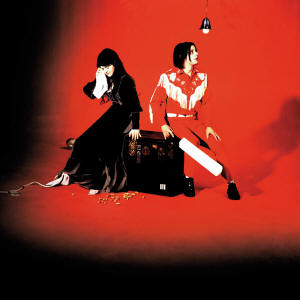|
|
You are reading the older HTML site
Positive Feedback ISSUE 70
sota Moonbeam II - Enter Here as reviewed by Timothy Roth
The Moonbeam II is an unassuming little turntable with a lot more musical power than its elegantly simple design suggests. It's meant to be SOTA's entry-level system, but it's easily the best record player I've ever had in my humble abode. I won't bore you with the setup details, only that the instructions guide you through what is a generally simple process, but I was obsessed with getting everything just right, which meant about three hours of tinkering and being drenched with sweat at the end. It was well worth the time spent. Now it was time to put it to the test. First up, The Beatles Stereo Vinyl box set, which had been staring me in the face for months while I waited for the Musical Fidelity V-LPS II phono stage amp and the sleek Ortofon 2M Blue cartridge to arrive to complete the system. At long last, I would be able to hear this beast. Now, before I describe what I heard, I need to note that the 2009 Beatles remastering project was compromised from the start. What began with good intentions, namely, transferring the original analogue master tapes straight to 192kHz/24-bit, ended up in a mediocre 16-bit compact disc box set, although a USB version of the set came out later in 44.1kHz/24-bit, the version I owned before getting the vinyl box. You see, the engineers at Abbey Road, in their infinite wisdom, didn't work with the 192kHz transfers. Instead, they sampled those samples down to 44.1/24 for the actual tinkering. The final product was a 44.1/24 remaster with limiting applied to make everything louder and the same remaster without limiting. The limited version became the USB box. This version was then dithered down to 16-bit for the CDs. So, if you're a fan of Redbook and you like your music dithered, the CD box is your Holy Grail. The vinyl box set, however, was taken from the original 44.1/24 remaster before limiting was applied. Why this wasn't the version released on the USB stick is beyond me, although I suppose they needed to have yet another reason for you to buy it all over again. On top of this, the original master tapes of Help! and Rubber Soul weren't even used. Instead, they pulled out the old VHS tapes George Martin used to remix these two albums in 44.1/16 back in 1986, which we all know was the pinnacle year of digital media, and used them as the source. Which means that for these two vinyl LPs, you're listening to CDs on vinyl (which is sadly common these days; don't trust any vinyl release made in the last ten years unless you know the provenance for certain). Add to this that masses of these box sets were botched. Just look at the Amazon reviews and you'll see that EMI went with cheap novelty vinyl factories in the EU and US to press these records, with warps galore. Here's another lesson, 180 grams doesn't mean a thing if the record you receive is melted or suffers from non-fill, which isn't really a problem if you like hearing sheets of paper being torn overlapped on your pristine recording. Then, of course, with long sides like the UK Beatles releases are know for, with 14 songs per side, you get tightly crammed microgrooves, with all kinds of pre-echo and, if you're lucky, post-echo. Who doesn't love hearing the last notes of "Sexy Sadie" decay followed by a very audible opening riff to "Helter Skelter" followed by the actual opening riff to "Helter Skelter" a second later. Not to mention that by the time you get to the last song on a side, the record is now moving at half the speed it was on the first song. By "Long, Long, Long", ironically, you're now getting 200 mm of vinyl per second instead of the 510 mm you started with. You know what, the heck with vinyl. Except the Moonbeam II seemed to be kindly asking me to give vinyl another chance. What I heard from these Beatles records through the Moonbeam was so seductive, all my disappointment with the botched box set disappeared (fortunately mine has no major pressing defects). This is the best I've ever heard the Beatles sound (barring some unobtanium I stumbled across from some other planet I'm not at liberty to describe). I'm serious. The Moonbeam brought a warm and massive dynamic range I had never heard before. For the first time ever, side three of The Beatles (White Album) sounded like heavy metal. The dynamic range was huge, testing the limits of the range vinyl can handle. Maybe that non-limiting had more of an effect than I thought it would. And these records sound more natural and beefy than the equally compromised, artificially treble-ized Mobile Fidelity f#$%-ups, which I'm also not at liberty to discuss (but it seriously pisses me off). Anyways, if there is an extended dynamic range with these vinyls, the Moonbeam revealed it in no uncertain terms. The USB stick sounds like a USB stick in comparison. This is where I first fell in love with the Moonbeam. I know it's an audiophile cliché to say, "once I plugged in this new line conditioner, I heard shit I'd never heard before, and I spent the next 48 hours listening to 500 different albums", but here's the honest truth. I had about five other components overdue for review, but they all had to wait. I spent a full three weeks listening to nothing but the Moonbeam. I was transfixed, hypnotized. I can't even imagine what the upper-range SOTA turntables sound like. It frightens me. So I listened to the Beatles box straight through. Three times. Then I put on some other good stuff to give it a try.
This time I put on Elephant, by the White Stripes. This is a record that actually says on the cover "No computers were used during the writing, recording, mixing or mastering of this record." So here was true analogue, not CD on vinyl. It tore through my speakers with an angry vengeance. Dirty, raunchy, and punchy, just like it's supposed to sound. Next was Radiohead's In Rainbows, which, as far as I know, was practically a live recording to analogue tape, with only a few overdubs here and there. The sound was lush and seductive, warm and inviting, three-dimensional in a way the CD isn't, even down to the inner grooves. It helps that the record is not only 180 grams, but also 45 rpm on four sides. Not bad at all. I also tried Radiohead's most recent album, The King of Limbs, also 45 rpm and one of the most sonically detailed albums I've ever heard. The details were all intact, even down to the barely audible talking you can hear in the looped beat of "Separator", perhaps my all-time favorite song. I also used The King of Limbs to test the accuracy of the Moonbeam's timing by playing the opening song on my computer simultaneously with the vinyl. I was expecting some drift, which you can hear even in two CD players playing at the same time. When I got the two perfectly in sync, there was zero drift. The timing on the Moonbeam is "bit perfect". I also gave the 2011 remastered Achtung Baby vinyl a spin, my all-time favorite album, second only to the White Album, and heard that wintery overhead expanse and that hip shaking bottom characteristic of the album. Finally, I decided to give it the ultimate challenge. I went into the vaults and pulled out my mom's fully abused copy of Meet the Beatles!, which I expected to suck because, even though it's the original 1964 issue, it's Capitol's version, with added echo and tweaking, which means at best a second-generation master tape. Add to this that the record itself looked like it had been sand blasted, placed on the track of an Indy 500 race course for 40 years, and then played 500 times with a rusty thumbtack as the needle. The album cover is held together with tape, if that any indication of how many times my teenaged mother listened to it. To my astonishment, the first track leaped out of the speakers with so much energy, I suddenly understood what Beatlemania was all about. This is where the Ortofon 2M Blue cartridge really impressed me. It gripped those grooves like a Ferrari. I heard very little surface noise, just bold metallic rock jumping out of the speakers. I was beyond impressed.
Windcharger only wishes he could match the Moonbeam II's road-gripping accuracy. I should mention that I found the I-Clamp that came with it very helpful. It did just what it said it does. It holds the record flat against the base all the way out to the edges. This was especially important for the Beatles box set, which had mostly flat records, but a few with minor wobbles that left certain parts of the record just above the surface of the platter. The I-Clamp solved this problem, which is a marvel for such a simple device. The Moonbeam II is only $750 MSRP, a very affordable entry fee to a new world of experience. From what I can tell, every dollar goes into quality design to produce the full range of musicality the Moonbeam offers. The dynamics of this simple design and the beautiful furniture quality wood veneer are just icing on the cake. Throw in made in the USA with a lifetime trade in value and it's a no brainer for anyone considering a quality built, entry level hi-end turntable. The final verdict is that the Moonbeam II is much more than an entry level turntable. In fact, it's not leaving my home. I'm keeping it, and, most impressively, I'm going to keep listening to vinyl. Tim Roth |










